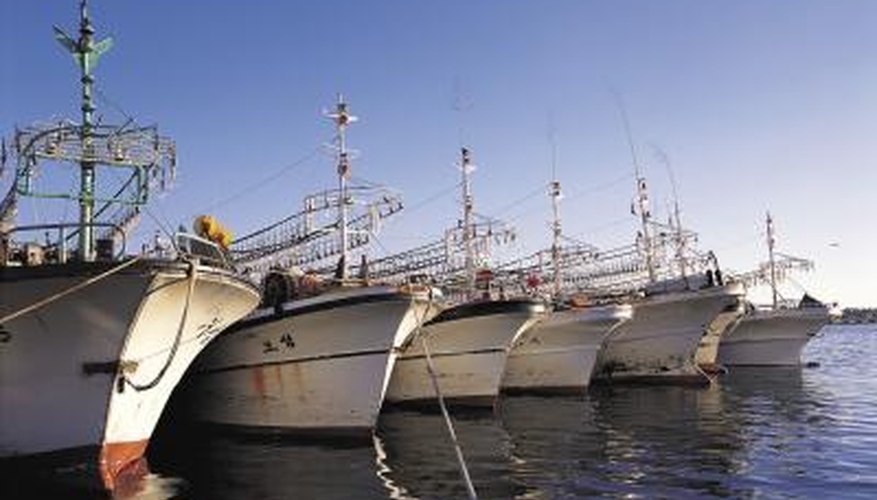Many fishermen have invested thousands of dollars on their fish finders. The best of these are waterproof units that combine colour touch-screen displays, GPS technology and sonar connectivity to get right to where the best catches are schooling. Another option is setting up your laptop computer as your sonar station. It won't be as inexpensive as you may have imagined, and you run the risk of getting your laptop wet, but you can equip an ordinary computer to perform these tasks and improve your yields.
Buy an extra battery for your laptop, which can be charged up before you head out. Look for a spare that's advertised for extended use. Many laptop batteries will only stay charged for three or four hours and maybe even less if you'll be asking it to perform as a fish finder.
- Many fishermen have invested thousands of dollars on their fish finders.
- Many laptop batteries will only stay charged for three or four hours and maybe even less if you'll be asking it to perform as a fish finder.
Use your laptop to display and manipulate the data being shown on your fish finder screen, if the manufacturer provides a USB connector and desktop software for your model. Simply connect the fish finder and laptop via USB adaptor and install the company's desktop software on your computer. This also may allow you to download more detailed maps from the company for the area in which you're fishing.
- Use your laptop to display and manipulate the data being shown on your fish finder screen, if the manufacturer provides a USB connector and desktop software for your model.
Purchase a dedicated transducer that plugs into your USB port (see the Resources section for this option).
Load the software provided by the transducer manufacturer on to your computer. Versions are available for Linux, Macintosh and PC platforms. For Windows, this means inserting the software disc into the laptop's CD port and, when prompted, selecting to "Run" the software. Several software manufacturers such as Raymarine and Barco are available to fill this role of running your desktop fish finder.
Keep your laptop in a waterproof area of your boat. Ordinary boating will often spray or splash anything on the deck. If possible, utilise a cabin or shielded area to position your laptop.
Open your sonar station software after it's loaded on to your system and familiarise yourself with the controls. Test out your new fish finder on the water, with your new laptop system set to "Scan" or some similarly named mode.
TIP
Take along a dedicated fish finder the first time you use your laptop-based sonar system to test out its efficacy.
